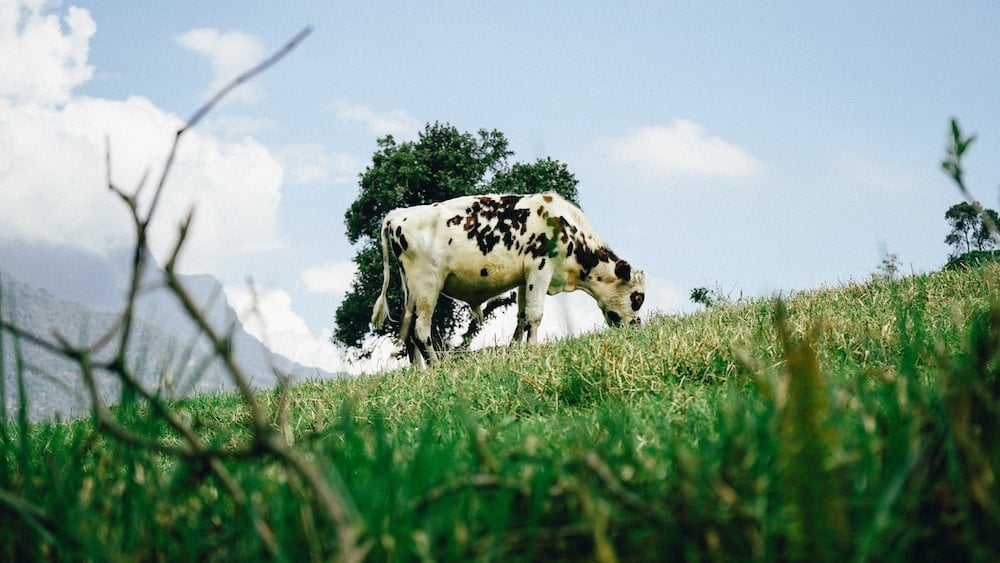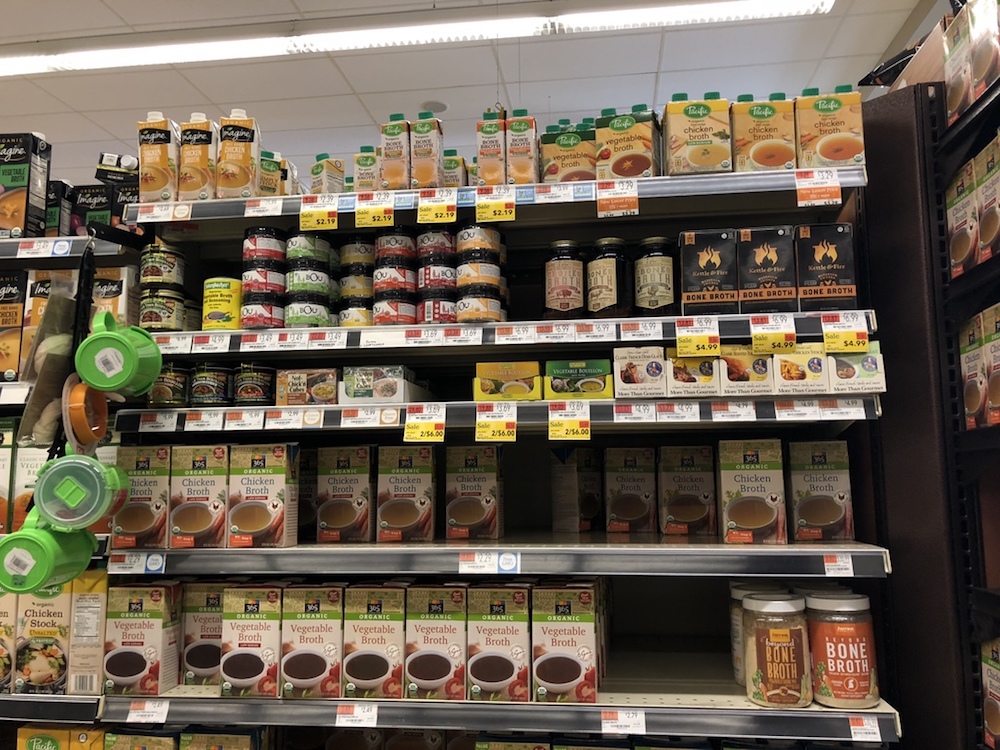Kettle Fire Beef Broth Sold at Wholefoods
When you're having a busy week, it can be difficult to find the time to prepare a batch of homemade bone broth. Or—if you share the same struggle as many of us—it's not only time that's the issue, but sourcing high quality, collagen-rich bones and connective tissue.
So, you take a trip down to your local Whole Foods Market to buy some pre-made bone broth. And when you get to the soup and stock aisle, you find there's not one, but several different types of prepared bone broth to choose from. And they all look similar. How do you know which one is best? Is there a difference between brands?
You may think that having bone broth in your diet—regardless of which brand or source it's from—is better than having no bone broth at all. But there are a few things to look for when choosing a bone broth that make it worth your time and money.
What to Look for When You Shop for Bone Broth at Whole Foods

Step 1: Look for "Bone Broth" on the Label
When you go to Whole Foods, you'll find bone broth, stock, and regular broth all in the same aisle. You want to make sure the label clearly states "bone broth." Regular broth or stock isn't made with slow-simmered bones, so it won't contain collagen or gelatin. You'll also want to make sure that chicken, beef, or turkey bones are listed under the ingredients.
Step 2: Is the Bone Broth Made with Slow-Simmered Organic Chicken Bones or Grass-fed, Grass-finished Beef Bones?

You've heard the saying you are what you eat. But you're also what the foods you eat ate. In other words, if your bone broth is made with the bones and tissue of animals that had been treated with hormones and antibiotics, you'll be ingesting those chemicals, too, and tthose chemicals may affect the healing potential of the broth.
If you're looking for beef bone broth, you'll also want to check that, in addition to being grass-fed, the cattle were also grass-finished. This ensures they ate a grass diet throughout their entire life span, which means their bones are going to be much higher in anti-inflammatory Omega 3 essential fatty acids than cattle that were also fed a mixture of soy and corn.
Many people aren't aware that "grass-fed" beef is an unregulated term, and it can mean that the animal was raised for the first few months on a grass diet and then fed soy and corn in their later years. Since corn and soy are higher in pro-inflammatory Omega 6's, this makes a huge difference in the Omega 3:6 ratio and the nutritional value of the bones.
Let's not forget that soy and corn aren't natural foods for cattle to be eating. This wreaks havoc on their digestive systems, which results in more antibiotics to keep them healthy enough to make it to slaughter.
As we like to say, killer bones make killer broth. The first thing to look for in a quality bone broth is that it's made with organic animal bones, such as chicken bones or grass-fed, grass-finished beef bones.

Always make sure your bone broth lists "bones" on the label. Otherwise, it's most likely a regular chicken broth, and it won't contain the powerful nutrients from the bone marrow, such as collagen, immune-boosting alkylglycerols, or Omega 3 essential fatty acids.
The higher an ingredient is on the label, the more prevalent it is. Ideally, a high-quality bone broth will list chicken or beef bones as a first or second ingredient, next to water.
Next, the slow simmer time.
The bones in any bone broth should be slow simmered for at least 10 hours to ensure the collagen, minerals, amino acids, and beneficial compounds, such as hyaluronic acid and glycosaminoglycans (GAGs), get released from the bones and make their way into your broth. Collagen takes approximately 8-10 hours to be released from the bones, so the slow simmer time is crucial.
Most bone broth brands have "slow-simmered" on their labels, but if they don't specify an exact length of time (a minimum of 8 hours), it's important to check for this information online.
A high quality bone broth should also list an acid such as apple cider vinegar or acetic acid on the label. These acids aid in the extraction of beneficial minerals such as phosphorus and magnesium.
Step 3: Does It Contain Additives or Preservatives?
Next up: additives and preservatives. When you make a traditional bone broth at home, you'll probably add herbs, vegetables, spices, apple cider vinegar (or another acid to help with nutrient extraction), and maybe a dash of sea salt and pepper—and that's it. Simple, right?
A high quality bone broth will be a pure bone broth, just like Granny made it—without additives and preservatives. And yes, this is possible for shelf-stable broths. (The secret lies within the packaging equipment.)
For example, some of the top-selling bone broth protein powder products in 2017 (not to be confused with premade fresh or frozen bone broth) tested positive for chemical additives, heavy metals, and other carcinogens. Of course, you'll never find these additives listed on a food label—but it's worth mentioning, as you're more likely to ingest chemical additives with powdered food products than when you consume them in their whole form.
However, this isn't to say premade liquid bone broths are guaranteed to be free from additives and preservatives. Some have been found to contain yeast extract or lactic acid.
Step 4: Is It Made with Organic Ingredients?

Most bone broth recipes will contain vegetables, apple cider vinegar, herbs, and spices. Ideally, all of these ingredients will be certified organic to avoid ingesting pesticides.
Step 5: Is It Ready to Drink?
There are a few different forms of bone broth you can buy. If you hit up the frozen section or the broth and stock aisle in the grocery store, you'll find liquid bone broth, and you may also find a bone broth protein powder, bone broth capsules, or a bone broth concentrate.
Call us old-fashioned, but we believe the best way to get nutrition from a bone broth is by drinking it in its whole, unprocessed form.
Step 6: Is the Packaging Recyclable?
One of the great things about drinking bone broth is that we consume the parts of an animal that would otherwise go to waste. And once the nutrients are extracted from the bones, they can be composted. Ideally, we can continue reducing the amount of waste we produce by choosing products that are packaged in 100% recyclable materials.
Source: https://blog.kettleandfire.com/whole-foods-bone-broth/
0 Response to "Kettle Fire Beef Broth Sold at Wholefoods"
Post a Comment